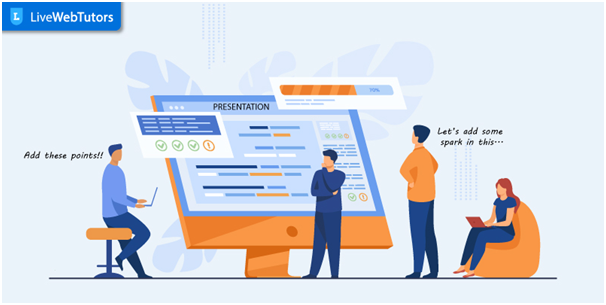Presentations may be excellent or dreadful. Even the “good” presentations—those that are well-put-together but don’t stand out—turn out to be terrible, and it’s generally because they’re dull. Boring presentations may convert a room full of focused experts into a room full of drowsy zombies checking their phones and counting the slides, destroying your reputation.
To put on a good performance, you should follow the best presenting techniques, which include practising and successfully organising your presentation.
“It’s the small details, such as your speech and body language that will keep your audience awake long enough to hear you.” says speaker Rocky who is professional online essay help provider
To get your audience’s attention, use these ten tricks:
- Begin with a startling statement
Don’t begin your presentation with anything generic and clumsy, such as a standard topic introduction. If you’re planning a big ending, why not start with a tease? For example, if your presentation concludes that your firm can transform the way people communicate with one another, begin by presenting a vision for that shift. People will want to hear how you got there if you can pique their attention right away. You may do the same thing with startling figures or eye-opening information.
- Make up a tale
Humans have an inherent affinity towards tales. We find it considerably simpler to listen to and relate to a tale than we do to a list of facts or assertions because narratives are an evolutionary social tool we employ to transmit experiences. Transform whatever in your presentation that you can into a tale. To substantiate your ideas, utilise real-life and made-up instances, as well as explanatory metaphors the more stories you can incorporate into your overall presentation, the more people will be interested in listening.
- Deviate from the script
It’s a good idea to plan ahead of time and even rehearse your presentation a few times to iron out any flaws. However, once you’re on stage, you should generally forget about the cue cards. You should be so knowledgeable about your subject and so absorbed in your presentation at this stage that you can talk about it in your sleep. Take a detour. People will be able to identify which lines have been practised and which have not.
- Make use of emotional inflexions in your tone of voice
You really shouldn’t be the one presenting if you aren’t emotionally involved in what you’re presenting. You must convey your sentiment carefully to those who are listening. If the numbers demand it, become enraged. Become enthralled by the answers you suggest. Get active on stage, and utilise emotive vocal inflexions to give your speech more depth. You might as well give your presentation to a robot to read if you don’t use that emotive inflexion.
- Make use of the louds and softs
Even if you manage to elicit some emotion from your audience, speaking in a monotone tone will tyre them certain portions of your presentation are unquestionably more captivating or significant than others. To emphasise the disparities, use the power of louds and softs. When you can afford for your users to pause, speak quietly, then increase to a greater level when you need to make a point.
- Changing your pace is a good idea
Similarly, changing your pace is a smart idea. When it comes to background material that most people already know or recapping portions from earlier, speak quickly, then slow down dramatically when it comes to hammering in a key piece of information. Use quiet to your advantage, but don’t get stuck in a typical speaking pattern.
- Individuals in the crowd should be singled out
This one requires some creativity because you may not be able to predict your audience’s makeup or desire to participate until the day of your presentation. If you can, try to include as many individuals as possible in your presentation. This may involve anything from bringing them onstage for a demonstration to something as simple as pointing to them when making a point.
- Make a few jokes
Even the most serious subjects require a light-hearted interlude. It’s your responsibility to ensure that your audience laughs throughout your presentation. You’ll retain their attention if you can make them laugh or at least smile. Obviously, your jokes should be acceptable, but don’t be afraid to go outside the box—confident, surprising humour tends to increase likeability.
- Remove the data from consideration
If at all possible, avoid mentioning numbers and facts. Put them on a background slide so that people may see them even if they aren’t watching your presentation. People don’t go to presentations to hear material that they could find on their own. They seek fresh ideas and ideals that are particular to them.
- Never read a slide-out loud
Last but not least, you should never read directly off a slide during a presentation (assuming you have some kind of slideshow in the background). The slides will be visible to your audience. Reading the slides aloud degrades their intelligence and makes your presentation tedious. Say something unique, and let your slides do the talking.
Conclusion
Why would you allow your presentation to be dull if it doesn’t have to be? Use these ten tips to keep your audience attentive and interested throughout your presentation. Feel free to seek an expert in assignment help service and create world class presentations.
